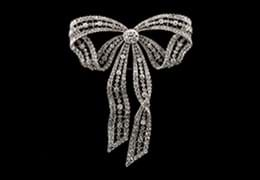The art of enamelling | The Mastery of Fabergé, Jewellery and Objects of Vertu | Wednesday 19 March 2025
On Wednesday 19 March, we are delighted to have our auction The Mastery of Fabergé, Jewellery & Objects of Vertu which presents an extraordinary opportunity to acquire pieces from one of the most celebrated luxury houses in the world, Fabergé. The auction features a stunning selection of Fabergé's signature designs, including jewellery, objets d'art, and rare accessories. Celebrated for their exquisite craftsmanship and masterful use of enamel, these pieces exemplify Fabergé's timeless artistry and elegance.
The art of enamelling has long been regarded as one of the most delicate and intricate forms of decorative craft, combining colour, heat, and precision to create designs that are both striking and permanent. Among the most celebrated practitioners of this ancient art was Peter Carl Fabergé, a Russian jeweller renowned for his lavish and exquisite creations that blend opulence with technical mastery. Fabergé's enamelling techniques not only transformed the way enamel was used in jewellery but also elevated the craft to new heights of artistry and prestige.
Peter Carl Fabergé (1846–1920) was born into a family of jewellers in St. Petersburg, Russia. Of Huguenot origin, his ancestors had fled from France first to Germany, then to Russia, where they had settled by the early 19th century. For his education Fabergé studied in Dresden, Germany, and from there travelled to England to learn the language, as well as visiting France and Italy. On his travels he would have had the chance to study the objects in some of Europe’s finest galleries, and we can see these influences throughout his work. He took over his father’s workshop in 1870 and moved it to larger premises on the same street in St Petersburg, where he was joined by his younger brother in 1882.
By the late 19th century, Fabergé's workshop had become one of the most celebrated jewellery houses in Europe, renowned for its innovative designs and exquisite craftsmanship. His fame grew significantly when he was appointed the official court jeweller to the Russian Tsars, notably Tsar Nicholas II. Fabergé's creations were sought after by the Russian elite, European aristocracy, and collectors from around the world. To fulfil the ever-increasing demand his workshops grew to employ some 500 craftsmen, supervised by his workmasters Michael Perkhin, Henrik Wigstrom, August Holmstrom, August Hollming and Erik Kollin among many others.

The Hub of Enamelling Innovation
The history of enamelling dates back thousands of years, but it was during the late 19th century that Peter Carl Fabergé transformed it into a highly sophisticated art form. And though Fabergé is perhaps best known for his creation of the famous Fabergé eggs, his artistry in enamelling was fundamental to the success and enduring appeal of his entire body of work. Enamel was a medium that Fabergé exploited with unmatched skill, elevating it from a traditional decorative feature to a central component of his designs.
Enamelling, the process of fusing powdered glass to metal at high temperatures to create a colourful, durable finish, was a technique that had been used in jewellery and decorative arts for centuries. Fabergé elevated this ancient craft by developing his own distinct style and pushing the boundaries of the technique. Under his guidance, Fabergé's workshops became the hub of enamelling innovation, producing pieces that were not only technically flawless but also infused with artistic brilliance. (Lot 9 and Lot 69).

Cloisonné Enamelling
Fabergé employed a variety of enamelling techniques that contributed to the uniqueness of his work. One of the most notable methods was cloisonné enamelling, in which thin metal strips were used to outline designs on a metal surface. These metal partitions, or cloisons, were filled with powdered enamel and fired, creating vibrant, intricate patterns that highlighted the delicacy and precision of Fabergé’s work. This technique allowed for the creation of highly detailed motifs, often inspired by nature, Russian folklore, and imperial symbols. Cloisonné enamel was being used by many of Fabergé’s contemporaries, such as Khlebnikov and Ovchinnikov to decorate silver and silver gilt objects (Lot 36 and Lot 30), however even on this more traditional Russian technique Fabergé made his impact and taste felt, by considerably extending the colour palette used. (Lot 39)

Guilloché Enamelling
Another important technique was guilloché enamelling, in which a metal object was engraved with a delicate pattern, and then thin layers of translucent enamel were applied over the surface. The light would pass through the enamel, creating a shimmering effect that enhanced the engraved design beneath. Guilloché enamelling was particularly popular in Fabergé’s pieces, such as the famous egg-shaped pendants and ornamental boxes. The interplay between the engraving and the enamel created a captivating visual texture, making the pieces appear to glow with an inner light (Lot 56, Lot 59 and Lot 78). To further elevate this, his workmasters would sometimes alternate colour of enamel in the layering to create opalescent enamel or even paint patterns on before the final layer of enamel, to create beautiful effects (Lot 71 and Lot 75). These translucent enamels were often contrasted with opaque black or white enamel to create stunning patterns and effects (Lot 11, Lot 105 and Lot 103)
Pâte-de-verre and Plique-a-jour Enamelling
In addition to cloisonné and guilloché, Fabergé also experimented with pâte-de-verre and plique-a-jour enamelling, further demonstrating his commitment to pushing the boundaries of the medium. Each piece of enamelled jewellery or object required an extraordinary level of skill and precision, as the process demanded exacting control over temperature, timing, and application.
Fabergé’s Easter Eggs
Fabergé’s Easter eggs are perhaps his most famous works, and many of these masterpieces feature intricate enamelling. The eggs were initially commissioned by Tsar Alexander III as a gift for his wife, Maria Feodorovna, and later continued under Tsar Nicholas II. Each egg was a marvel of innovation, incorporating elaborate designs, hidden surprises, and, of course, dazzling enamel work.
The Fabergé eggs, with their combination of gold, enamel, and gemstones, exemplified the jeweller's mastery of enamelling techniques. The 1895 Imperial Coronation Egg, for instance, featured a luxurious design that included the use of translucent blue enamel, with intricate patterns of gold and diamonds. The enamel work, especially in the eggs, showcased Fabergé’s ability to create designs that were not only visually stunning but also subtly enhanced by the interplay of light and colour.
Beyond the famous Imperial Easter Eggs, Fabergé created countless other pieces, including pendants, cigarette cases, and brooches, that incorporated his signature enamelling techniques. (Lot 77, Lot 60 and Lot 62) His works transcended simple luxury, becoming symbols of imperial power, sophistication, and a devotion to beauty.
The Legacy of Fabergé
The legacy of Fabergé’s enamelling techniques is profound. Fabergé’s work was revolutionary not only because of the technical skill involved but also because of its artistic depth. He successfully fused the rich traditions of Russian craftsmanship with the opulence of European art nouveau, creating a new standard for luxury and creativity. His masterpieces continue to inspire modern artisans and remain highly prized by collectors today.
The decline of the Russian Empire and the Russian Revolution led to the eventual closing of Fabergé’s workshops, but his legacy endured. Today, many of his works are housed in museums such as the Fabergé Museum in St. Petersburg and the Kremlin Armoury, where visitors can marvel at the exquisite artistry and technical skill that went into every piece. Fabergé’s influence is still seen in contemporary jewellery design, as his fusion of delicate artistry and craftsmanship serves as a model for modern jewellers striving, but rarely succeeding in achieving similar levels of perfection
View page turning catalogue
Auction Details
This is a live auction taking place on Wednesday 19 March, 10.30am GMT at Dreweatts, Donnington Priory, Newbury, Berkshire RG14 2JE, UK.
Bidding:
Bidding is available online, in person, by telephone or you can leave commission (absentee) bids. To learn more including details on registering to bid, payment and shipping, click here. To register to bid, click here.
On View:
London: Dreweatts, 16-17 Pall Mall, St James's, London SW1Y 5LU
Tuesday 11 March: 10am-8pm
Wednesday 12 March: 10am-4pm
Newbury: Dreweatts, Donnington Priory, Newbury, Berkshire RG14 2JE
Friday 14 March: 10am-4pm
Sunday 16 March: 10am-3pm
Monday 17 March: 10am-4pm
Tuesday 18 March: 10am-4pm
Further information:
General enquiries: + 44 (0) 1635 553 553 | jsw@dreweatts.com
Press enquiries: press@dreweatts.com
To sign up for email alerts, click here.





















